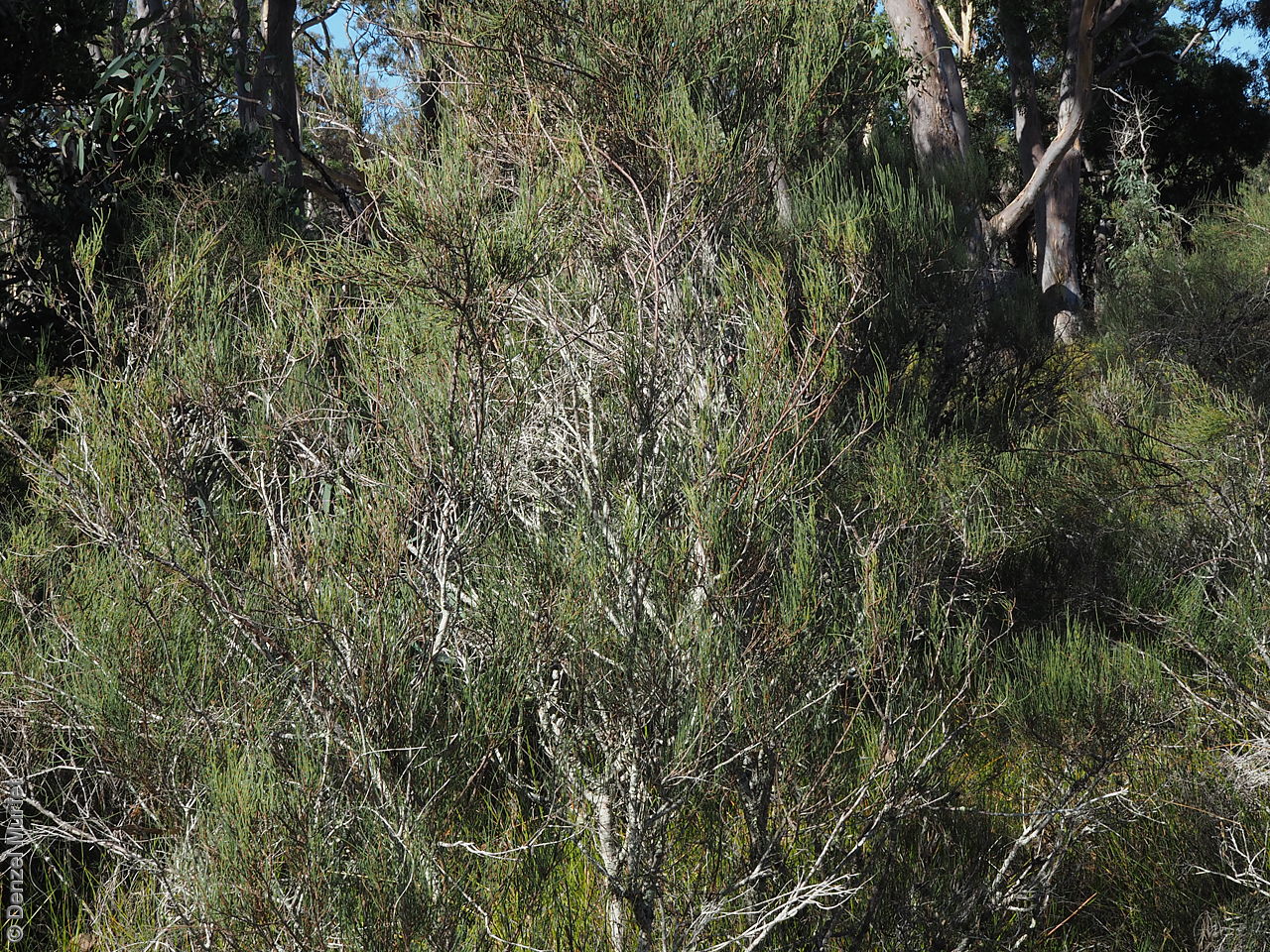
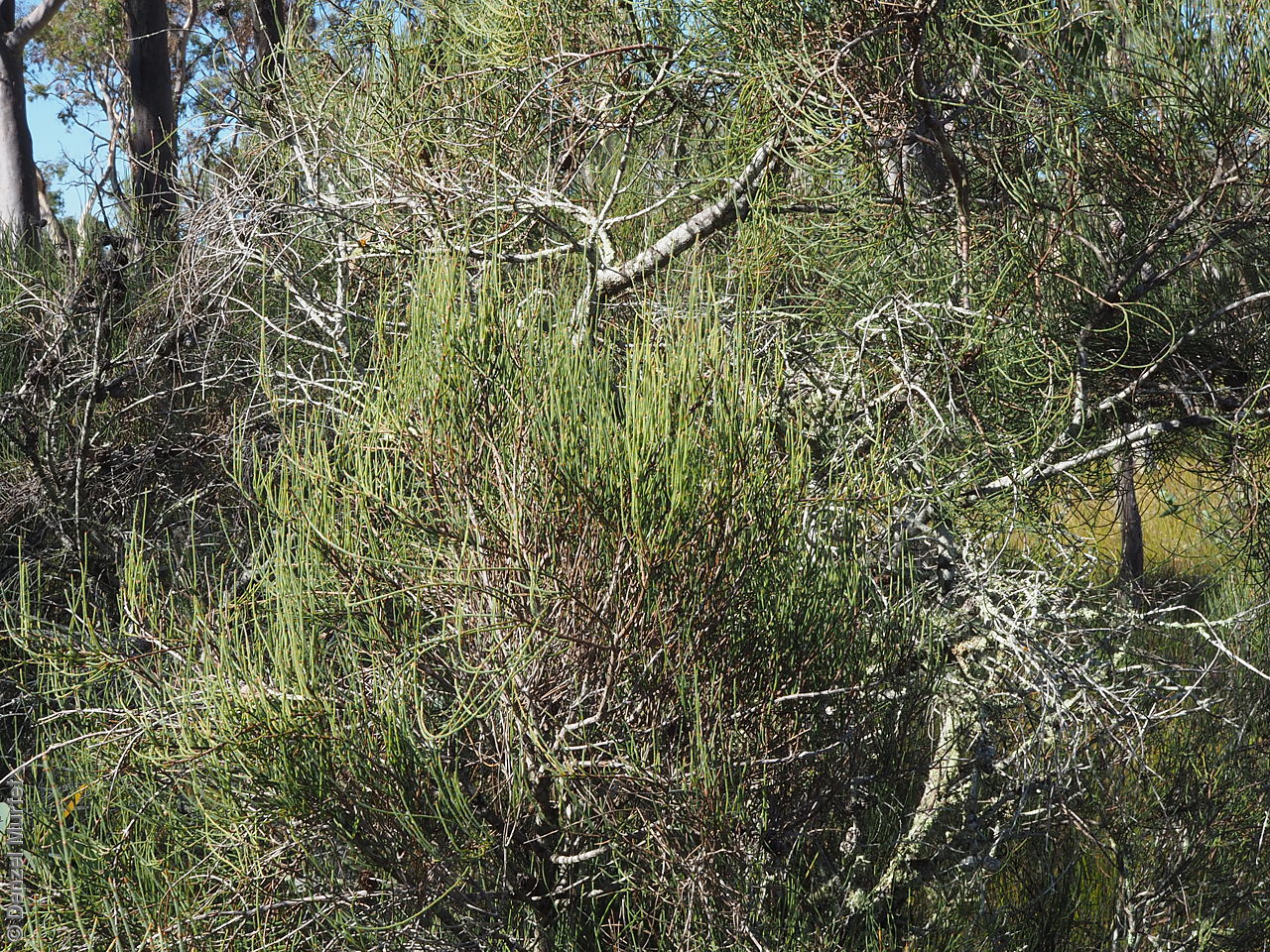

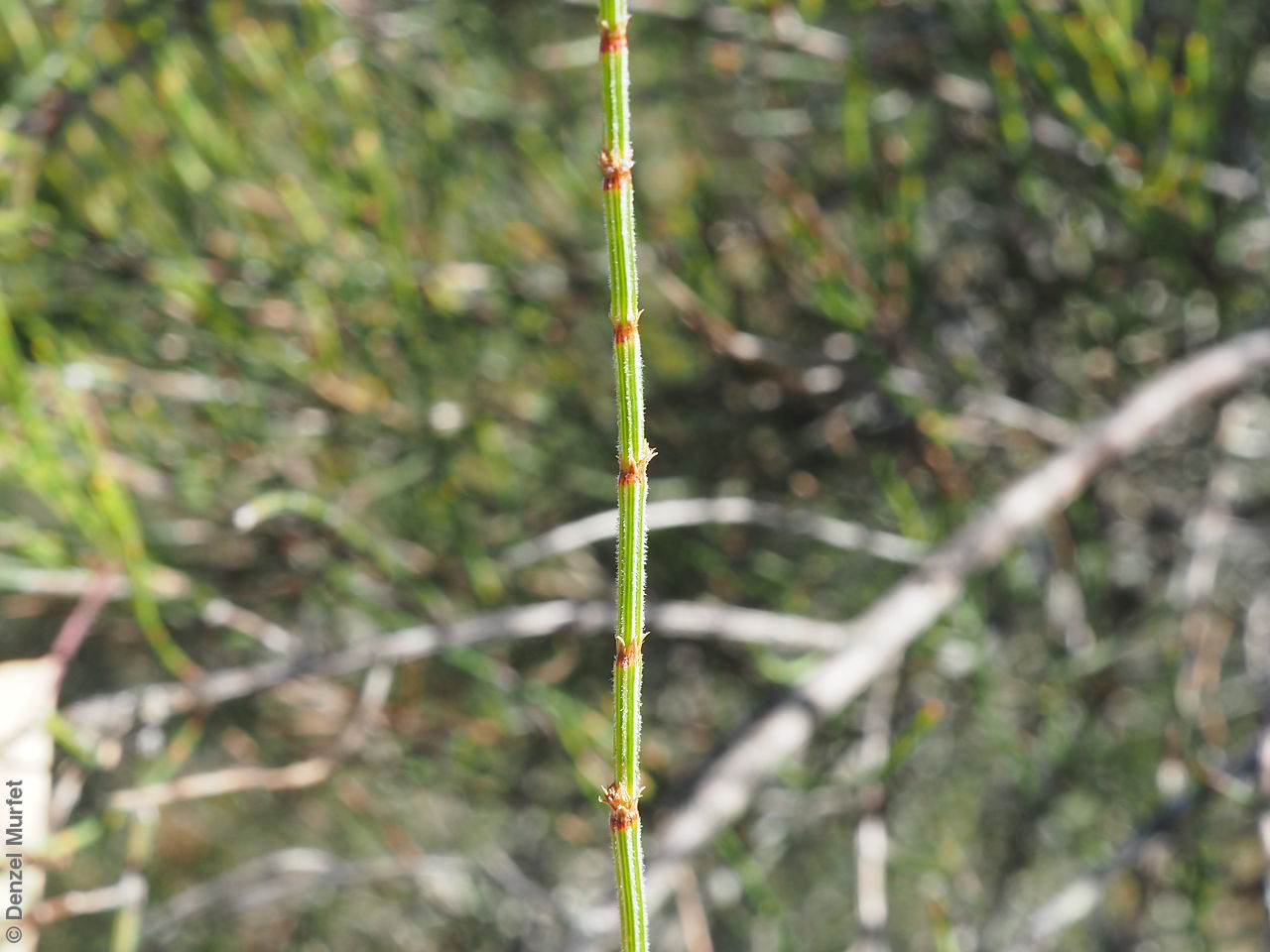
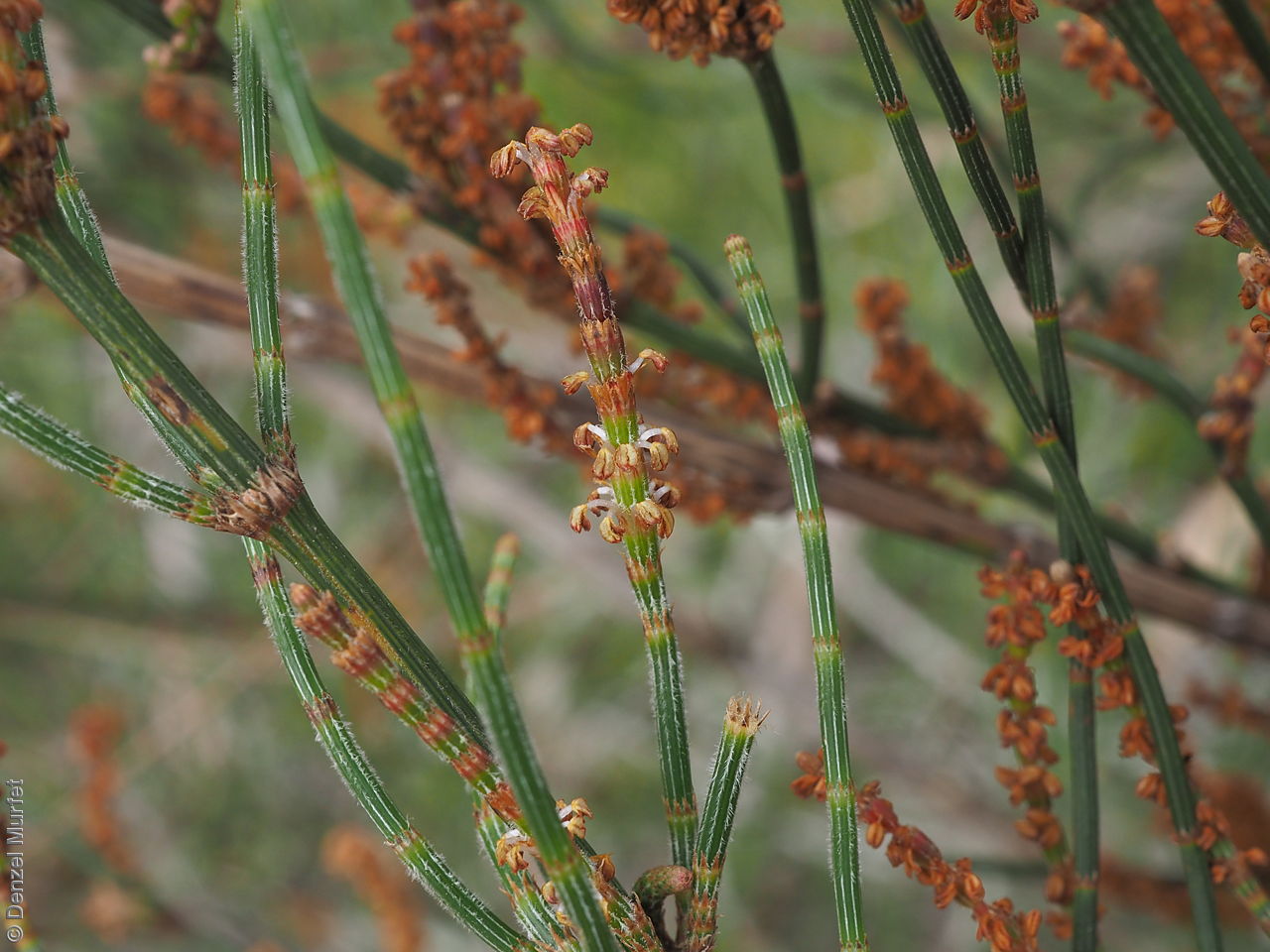
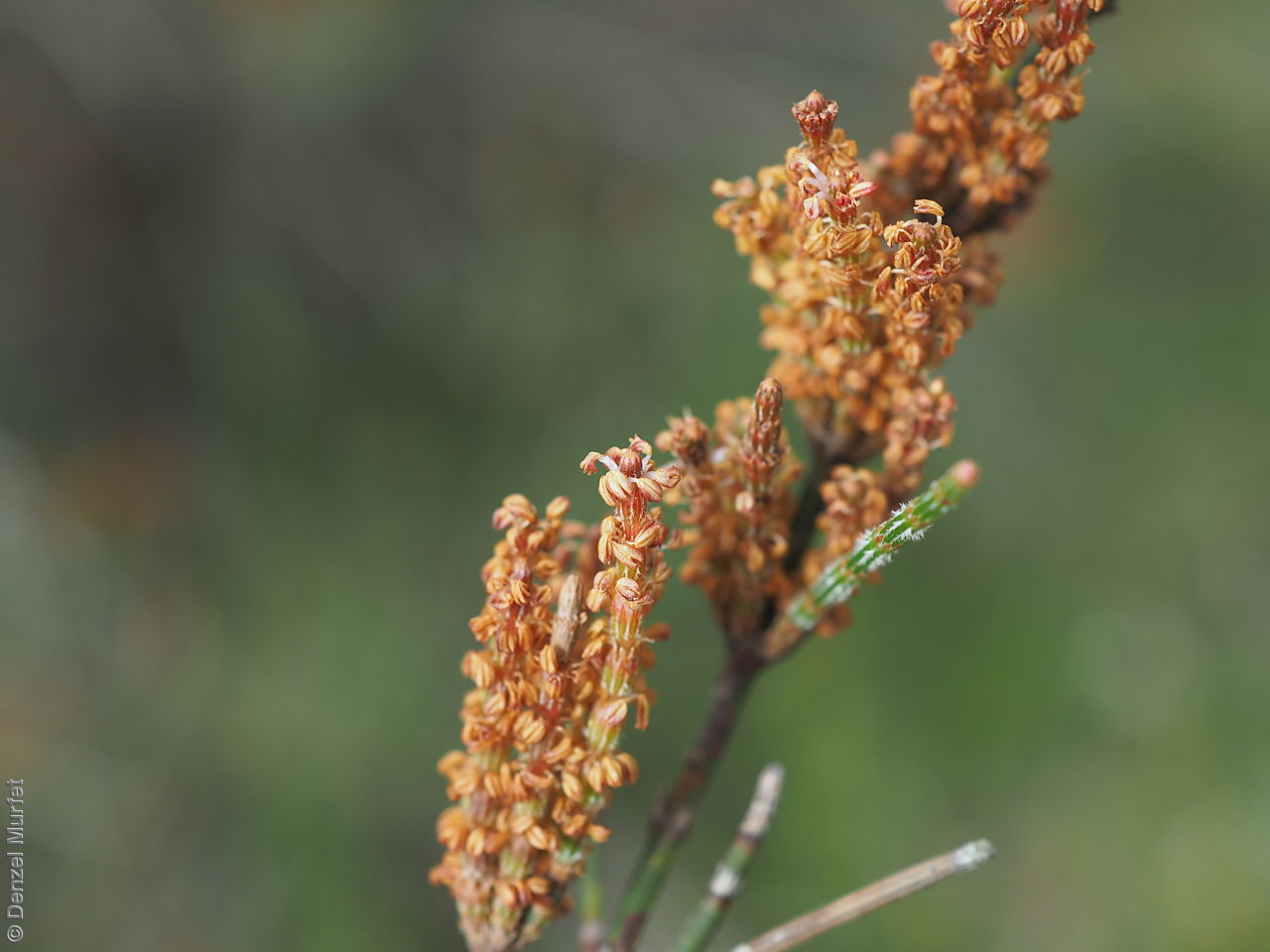
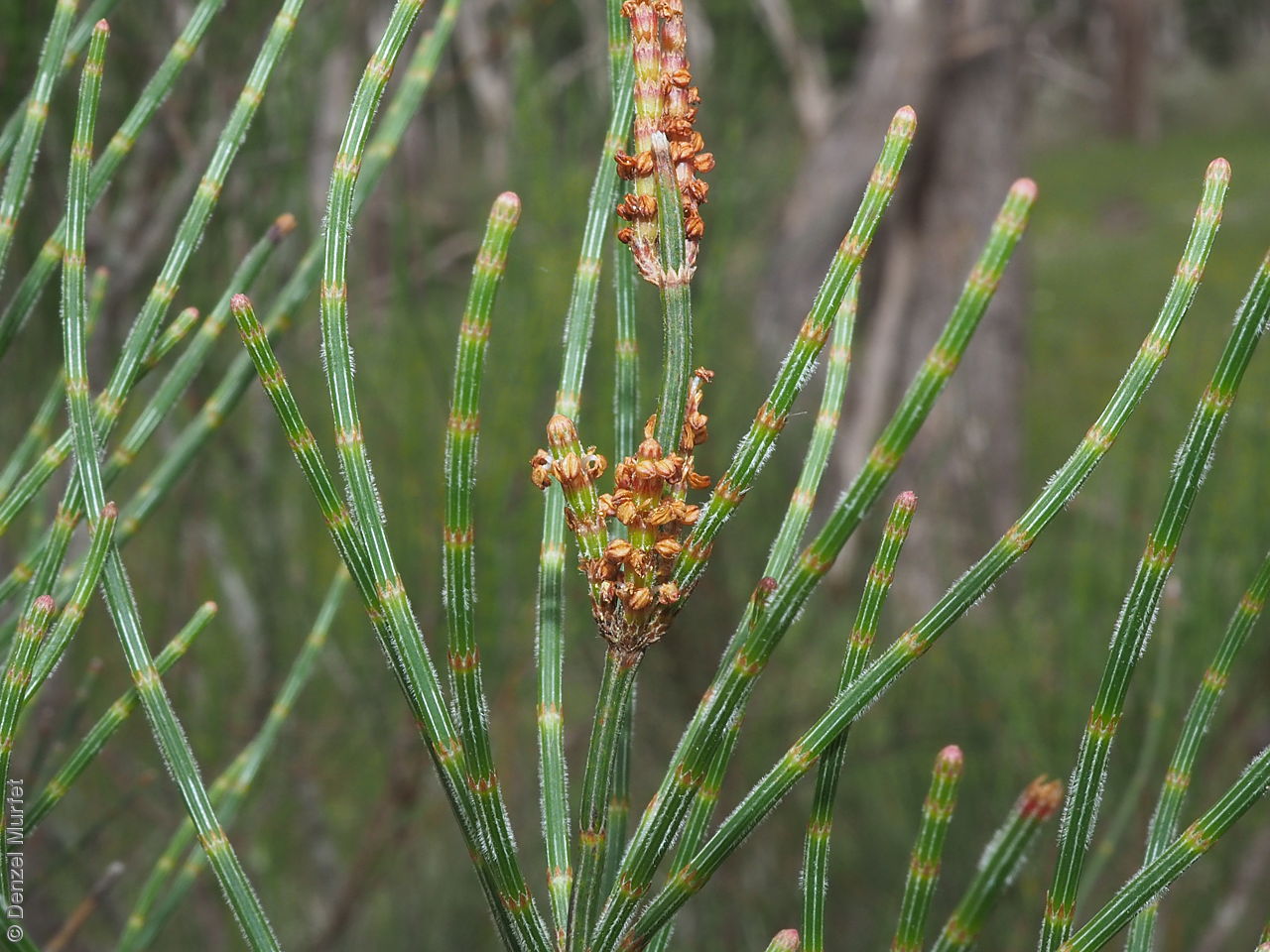
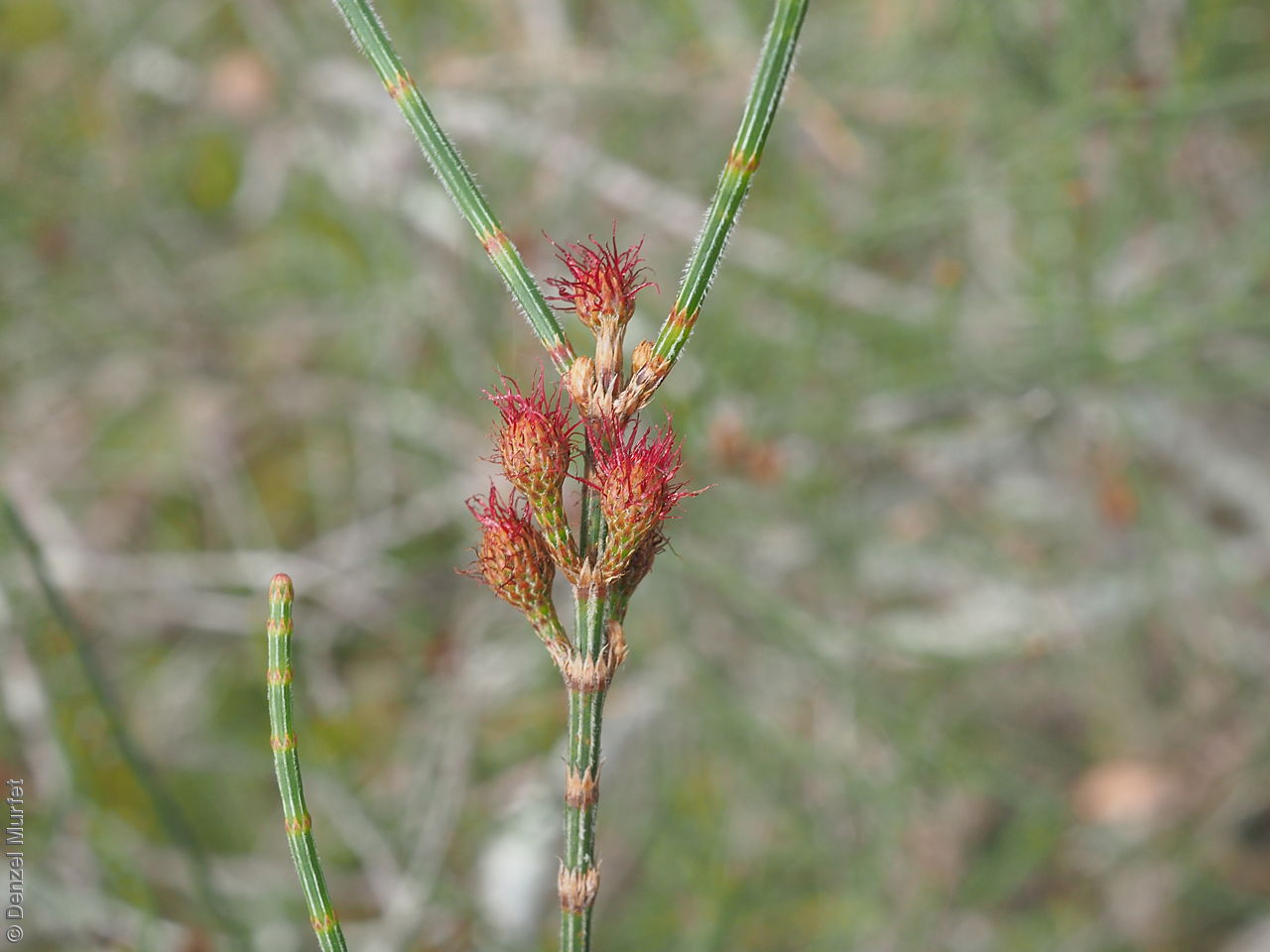
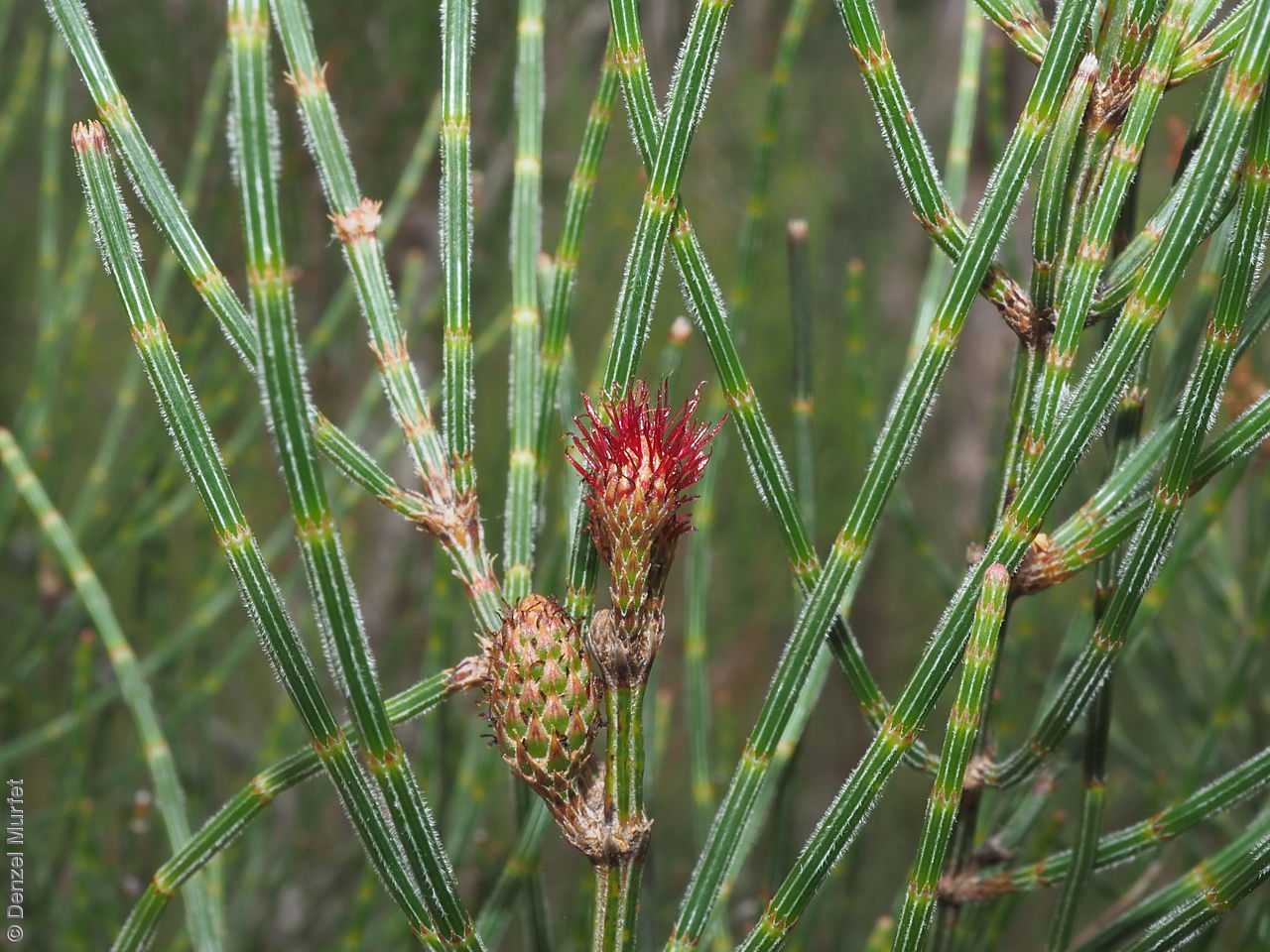
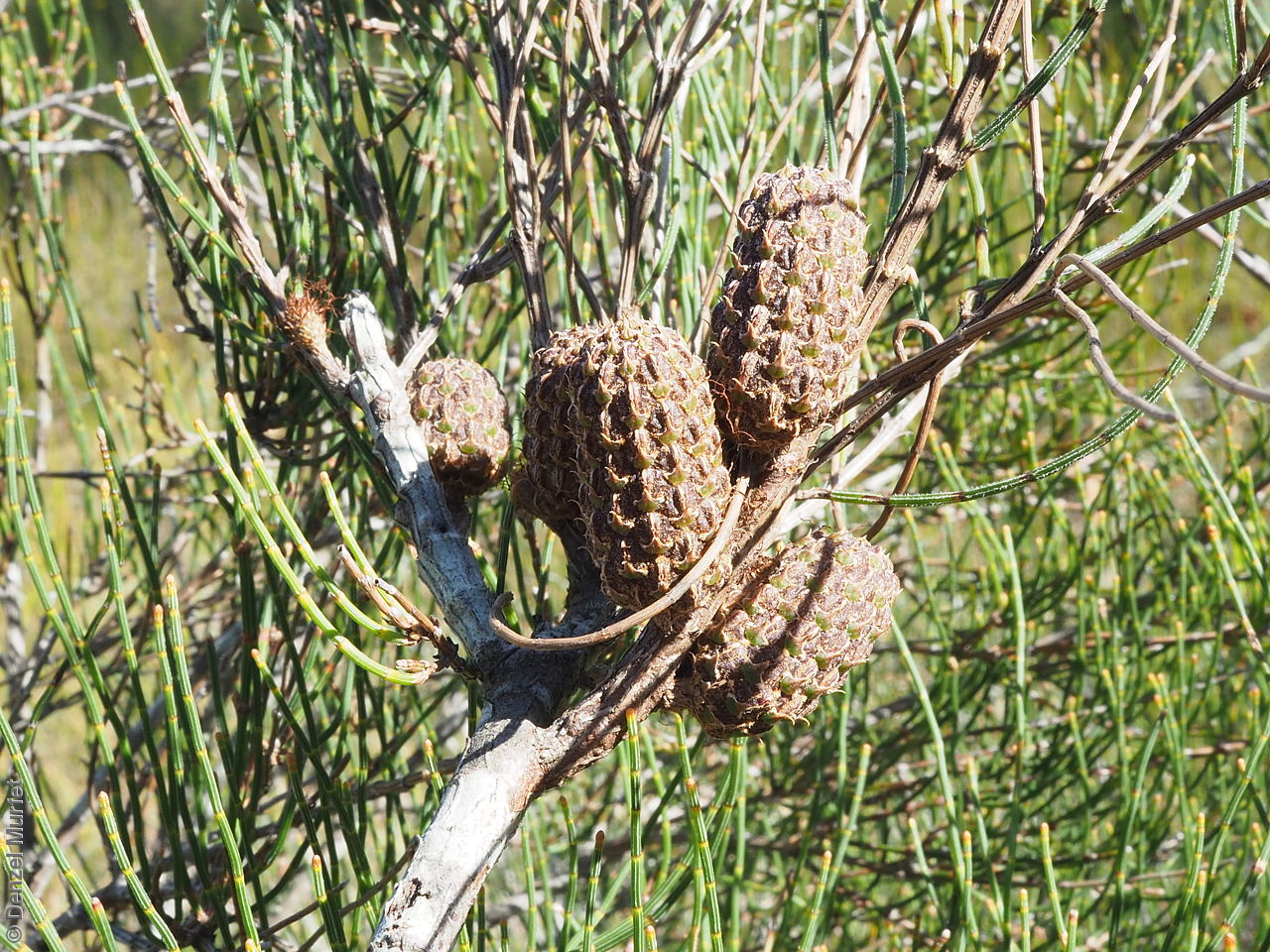
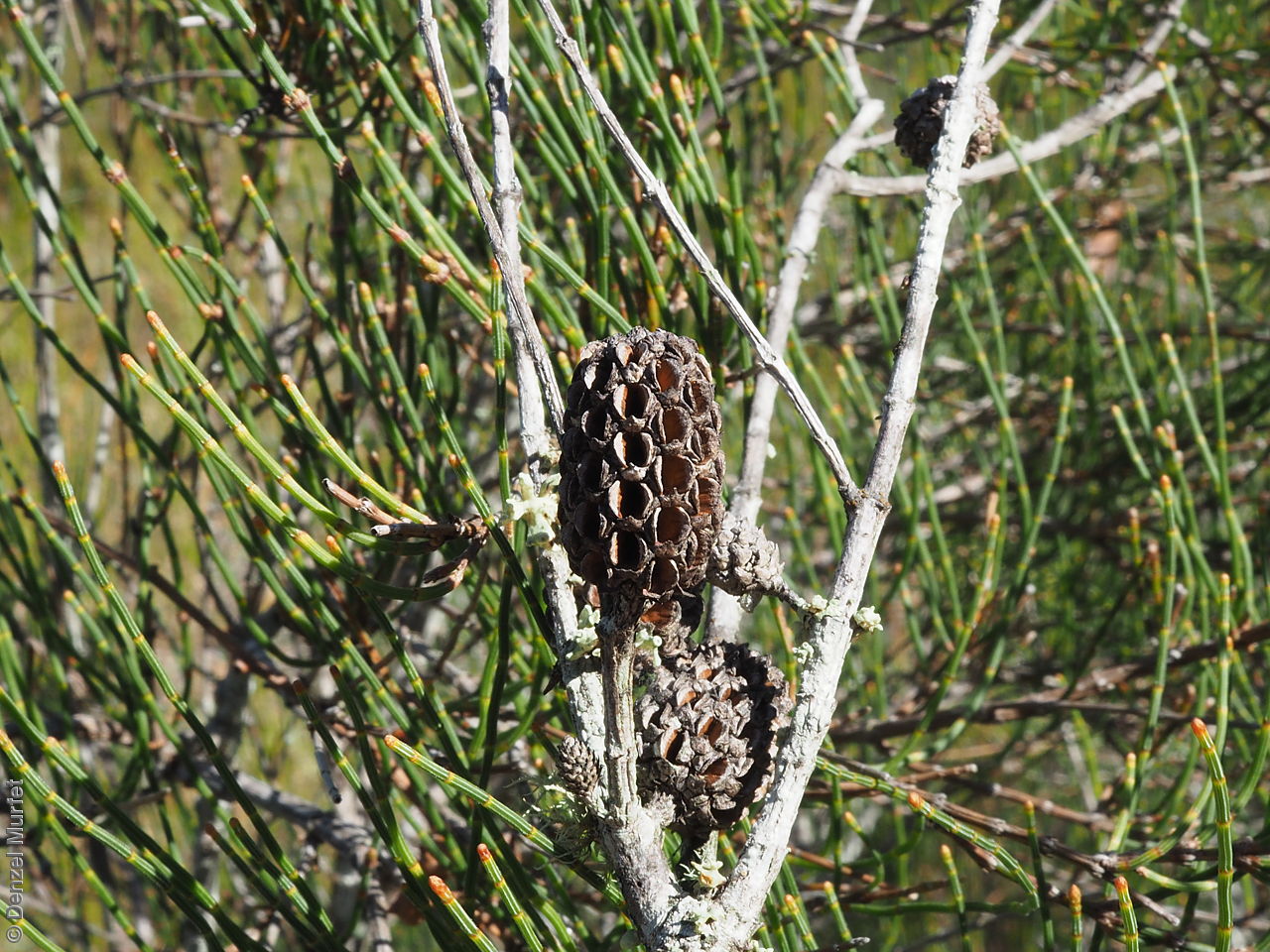
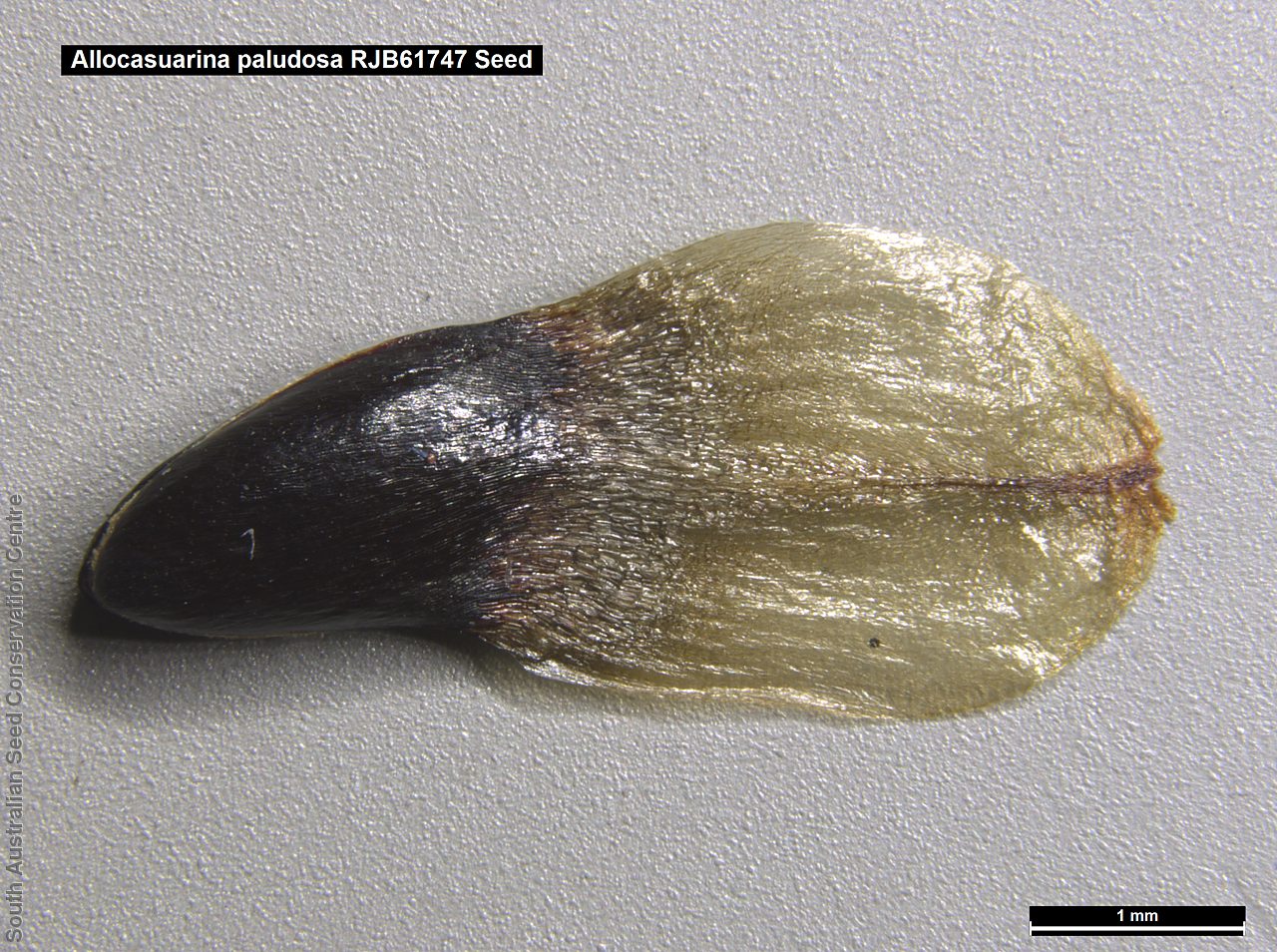
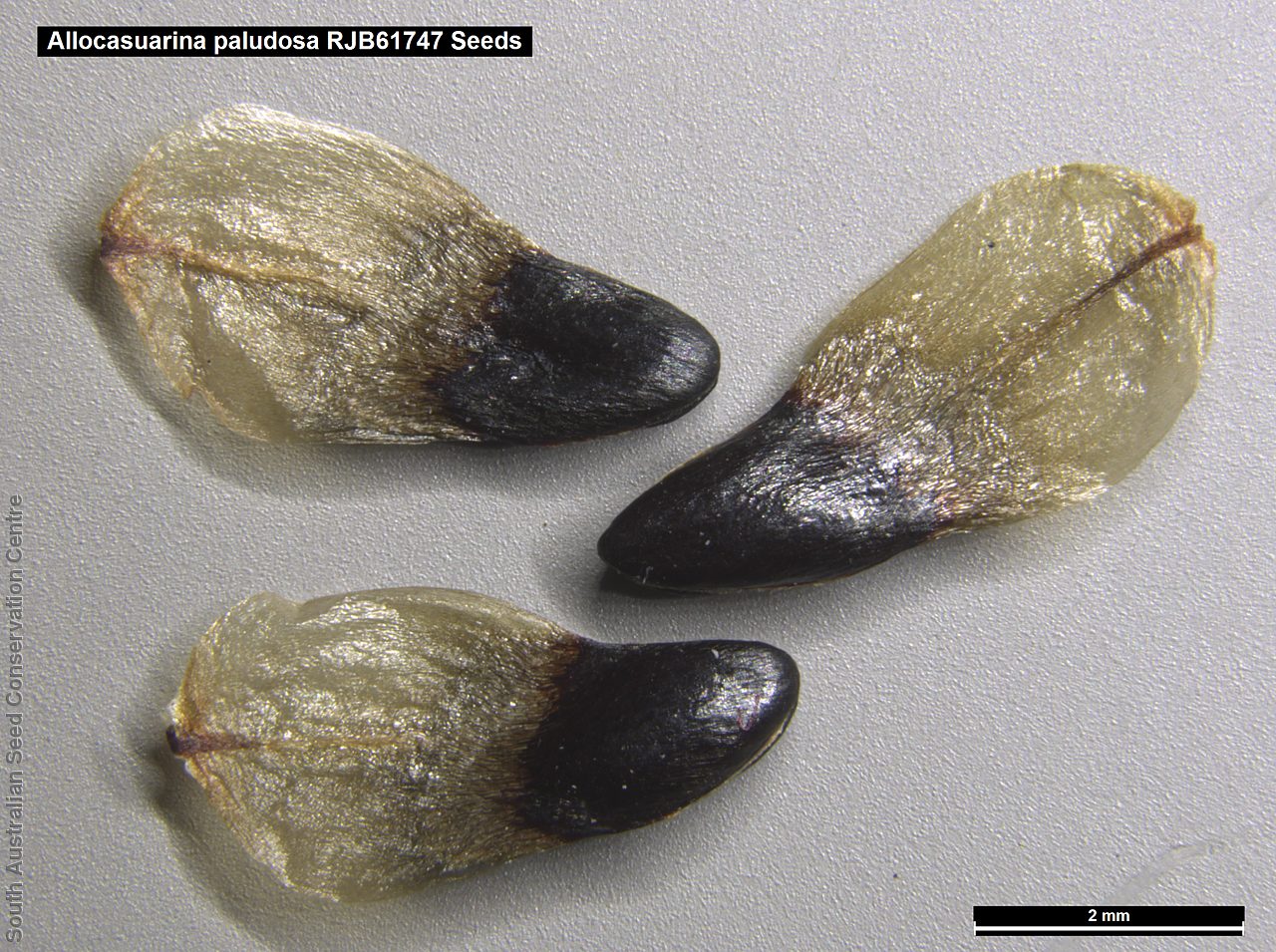


Botanical art
Prior names
Casuarina paludosa
Common names
Scrub Sheoak
Swamp Oak-bush
Etymology
Allocasuarina from the Greek 'allos' meaning other or different, indicating the relationship with the genus Casuarina (first used by Rumphius (1743) in allusion to the supposed resemblance of the "foliage" of Casuarina equisetifolia to the plumage of the Cassowary, which is from the Malay 'kesuari', later being latinised as Casuarius). Paludosa from the Latin 'paludosus' meaning marshy, referring to its occurrence mainly along the coast and fringing swamps.
Distribution and status
Found in the South-east in South Australia, growing in heath and on poorly drained soils above swamps at edge of woodland. Also found in New South Wales, Victoria and Tasmania. Native. Uncommon in South Australia. Common in the other States.
Herbarium region: South Eastern
NRM region: South East
AVH map: SA distribution map (external link)
Plant description
Monoecious or dioecious shrub spreading to 3 m high with smooth bark and ascending or curved stems (looks like leaves), to 20 cm long. Stem segment (articles) to 14 mm long and 1 mm diameter, smooth, usually densely pubescent in furrows with flat or slightly rounded ridges. Teeth (reduced leaves) 6–8, erect or spreading, not overlapping, to 0.9 mm long. Male spikes to 2.5 cm long. Cones cylindrical to ovoid, sessile or on peduncle to 2 mm long with cone body to 18 mm long and 13 mm diameter. Flowers throughout the year. Fruits are grey-brown, woody cylindrical cone on short peduncle with numerous valves. Seed embryo type is investing.
Seed collection and propagation
Collect seeds between January and December. Cones can be collected anytime as mature cones remain on the female plant. Collect cones that have closed valves from the lower part of the stem as these are more mature. Place cones in a tray and leave to dry for 2-3 weeks. This will allow the valves to dry and open releasing the seeds. Place the dried cones in a bucket and shake gently to dislodge the seeds. Use a sieve to separate seeds from the unwanted material. Seeds are non-dormant, viable seed should germinate readily